17,000–20,000 over 9,000 Result German victory | Dates 22 Jun 1941 – 30 Jun 1941 | |
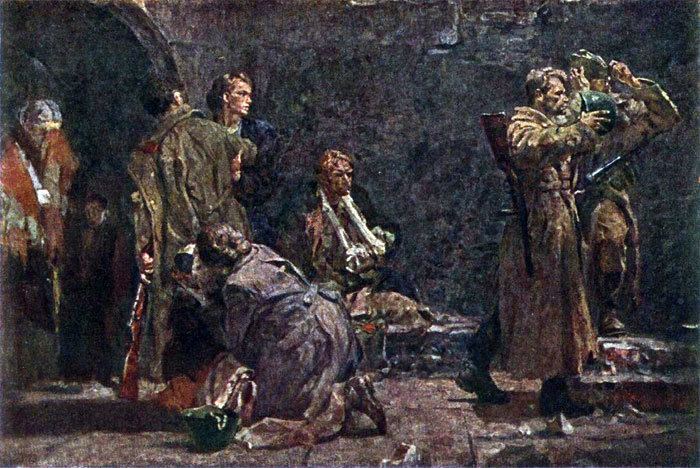 | ||
429 dead, 668 wounded more than 2,000 deadabout 6,800 captured Similar | ||
Russians vs germans 1941 1945 wwii defense of brest fortress
The defence of Brest Fortress took place 22–29 June 1941. It was the first battle of Operation Barbarossa. The Brest Fortress, defended by the Red Army against the Wehrmacht, held out longer than expected and, after the Second World War had finished, became a symbol of Soviet resistance. In 1965 the fortress received the title of Hero Fortress for the 1941 defense.
Contents
- Russians vs germans 1941 1945 wwii defense of brest fortress
- Background
- Opposing forces
- The siege
- In popular culture
- References
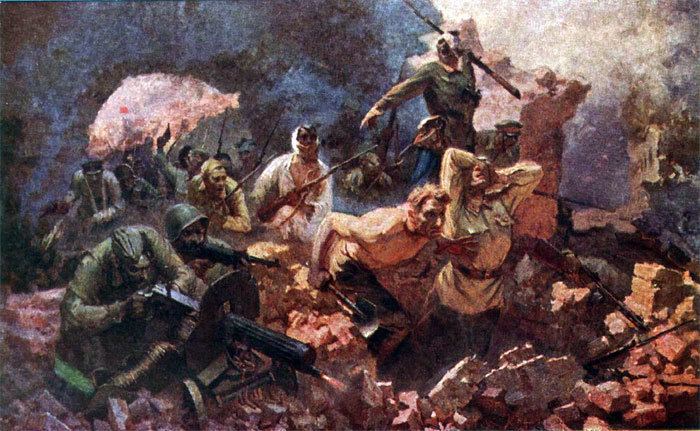
Background
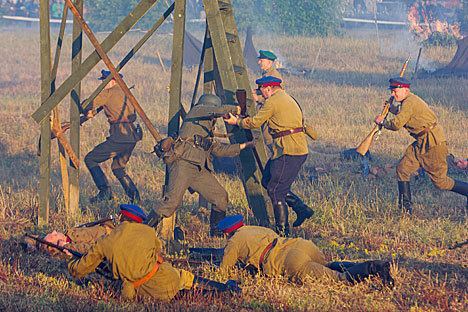
The area around the nineteenth-century Brest Fortress was the site of the 1939 Battle of Brześć Litewski, when German forces captured it from Poland during the Polish September Campaign. However, according to the terms of the 1939 German-Soviet Nonaggression Pact the territory around Brest as well as 52% of the then Poland was assigned to the Soviet Union. Thus, in the summer of 1941, the Germans had to capture the fortress yet again - this time from the Soviets.
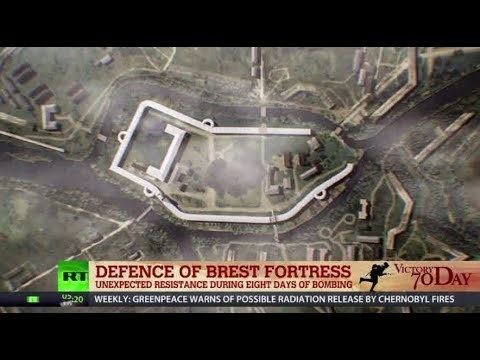
The Germans planned to seize Brest and the Brest Fortress which was located in the path of Army Group Centre during the first hours of Operation Barbarossa. The fortress and the city controlled the crossings over the Bug River, as well as the Warsaw–Moscow railway and highway.
Opposing forces
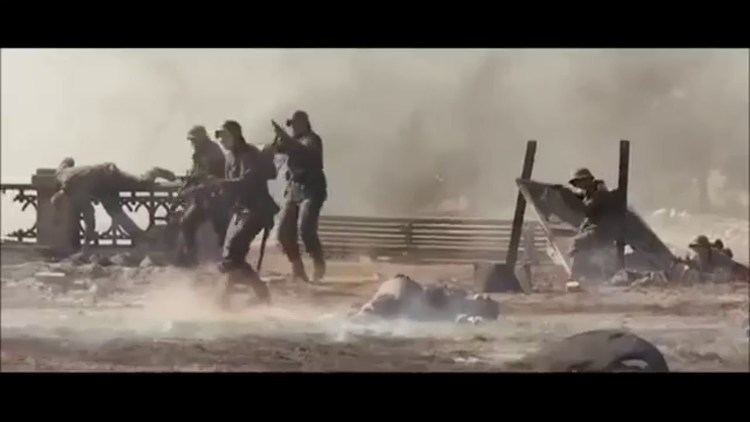
The garrison in the fortress comprised approximately 9,000 Soviet soldiers, including regular soldiers, border guards and NKVD operatives. The Soviet soldiers belonged to elements of the 6th and 42nd Rifle Divisions, under Colonel Mikhail Popsuy-Shapko and Major-general Ivan Lazarenko respectively, the 17th Frontier Guards Detachment of the NKVD Border Troops and various smaller units (including the hospital garrison and a medical unit, as well as units of the 132nd Separate NKVD Convoy Battalion, etc) inside the fortress. There were also 300 families of the servicemen inside the fortress as well.
The initial defense plan allowed for 12 hours to secure the area in face of the 45th Infantry Division (Austrian) (about 17,000 strong) as well as parts of the artillery of the 31st, 34th Infantry Divisions and 2nd Panzer Group under Heinz Guderian (in total, about 20,000 men).
The siege
The fortress had no warning when the Axis invaded on 22 June 1941, and became the site of the first major fighting between Soviet forces and the Wehrmacht. From the first minutes of the invasion, Brest and Brest Fortress were shelled by the German Wehrmacht. The initial artillery fire took the unprepared fortress by surprise, inflicting heavy material and personnel casualties. Fierce battles were fought at the border, in the town of Brest and in the fortress itself. The first German assault on the fortress took place half an hour after the bombardment started; the surprised Soviet defenders were unable to form a solid front and instead defended isolated strongpoints–the most important of which was the fortress itself. Some managed to escape the fortress; most were trapped inside by the encircling German forces. Despite having the advantage of surprise, the subsequent attempt by the Germans to take the fortress with infantry quickly stalled with high losses: about 281 Wehrmacht soldiers died the first day in the fighting for the fortress. Heavy fighting continued two more days. In the evening of June 24, 1941, some 368 Germans were dead and 4-5,000 Red Army soldiers in captivity.
On June 25 and June 26, 1941, local fighting continued mainly in the citadel. Till the evening of June 26, 1941, most of the northern Kobrin fortification, except the East Fort, was captured.
Regarding the fighting around East Fort, the commander of the 45th Infantry Division, Generalmajor Fritz Schlieper, wrote to the High Command in his detailed report:
Once the East Fort could not be taken by infantry the Luftwaffe bombed it twice on June 29 and forced its approximately 360 defenders to surrender.
Although the Soviet soldiers in the opening hours of the battle were stunned by the surprise attack, outnumbered, short of supplies, and cut off from the outside world, many of them held out much longer than the Germans expected. The Germans deployed various powerful guns, rocket mortars 15 cm Nebelwerfer 41 and resorted to flame throwers. The civilians inside the fortress tended the wounded, reloaded the machine-gun discs and belts with cartridges and even took up rifles to help defend the fortress. Children brought ammunition and food supplies from half-destroyed supply depots, scavenged weapons and watched enemy movements.
Schlieper wrote in his detailed report that:
Chaplain Rudolf Gschöpf wrote:
On 24 June, with Germans having taken parts of the fortress, some Soviet troops were able to link up and coordinate their actions under the command of Captain Ivan Zubachyov; his second in command was Regimental Commissar Yefim Fomin. On 26 June small Soviet forces tried to break out from the siege but were unsuccessful and sustained heavy casualties. Probably the same day Zubachyov and Fomin were captured. Zubachyov was sent to a POW camp in Hammelburg where he died along with several million of his countrymen; Yefim Fomin was executed on spot for being a commissar and a Jew.
R.Gschöpf wrote:
The 45th divisional after-action report on the fighting for the fortress and the city of Brest of June 30, 1941 related: "The Division took 7,000 prisoners, including 100 officers. German losses were 482 killed, including 32 officers, and over 1,000 wounded". The magnitude of these losses can be weighed by the fact that total German losses on the Eastern Front up to 30 June 1941 amounted to 8,886 killed. The fighting at Brest therefore accounted for over 5 percent of all German fatalities. After eight days of fierce fighting the Germans had captured the whole fortress. But the strategic objectives - control over the Panzerrollbahn I, i.e. the road to Moscow, the important railway line, and the bridges over the Bug river - were accomplished the very first day of the war. Because of the high German losses the German High Command demanded General Fritz Schlieper to present a detailed report regarding combat at Brest 22–29 June 1941. It was made on July 8, 1941. A copy was found in the archive of the 45th Infantry Division, that was captured by the Red Army by Livny, Russia in March 1942.
Some individual soldiers and even small groups of Red Army soldiers kept hiding in the fortress after the fall of the Eastern Fort. During the last days, some of remaining defenders made inscriptions on the walls. One of them said:
It is said that Major Pyotr Gavrilov, one of the best known defenders of Brest (later decorated for it as Hero of the Soviet Union) was captured only on 23 July.
Some authors claim that isolated defenders were being rooted out by Germans as late as August 8th when Hitler and Mussolini visited the fortress with heavy security to protect them from remaining defenders. The only documentary proof of resistance after June 29, 1941, is a report that states a shoot-out on July 23, 1941, with the subsequent capture of a Soviet "Oberleutnant" the next day.
In popular culture
The events surrounding the defense of Brest Fortress were dramatized in the 1957 film Immortal Garrison and again in a 2010 film, Fortress of War.
Soviet writer Boris Vasilyev wrote a novel named "His name is not in the list" (В списках не значился) about a soldier named Nikolai Pluzhnikov who defended the Brest Fotress in 1941. At the end of the novel, when Pluzhnikov was captured by the German troops and was interrogated, he simply replied "I am a Russian soldier" and died due to exhaustion from months of fighting. Vasilyev's novel was dramatized in the 1995 film "I, a Russian soldier" (Я — русский солдат) directed by Andrey Malyukov.
